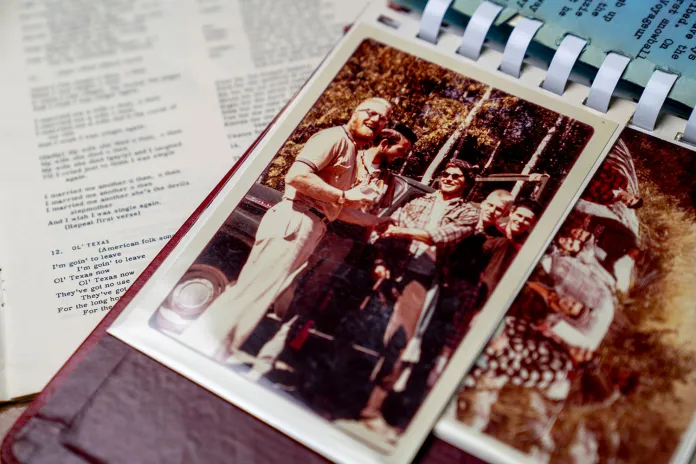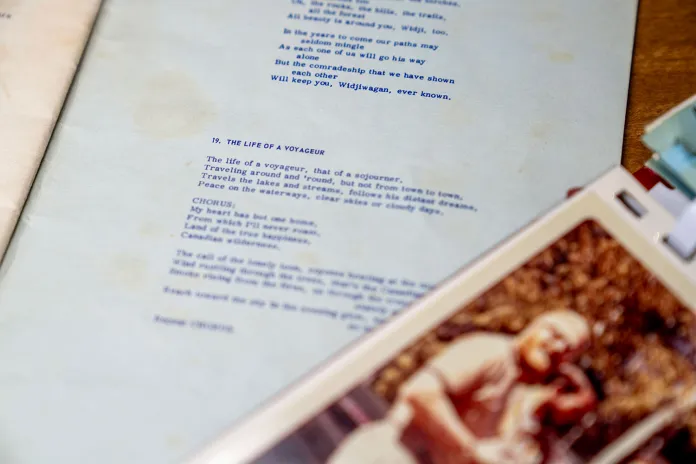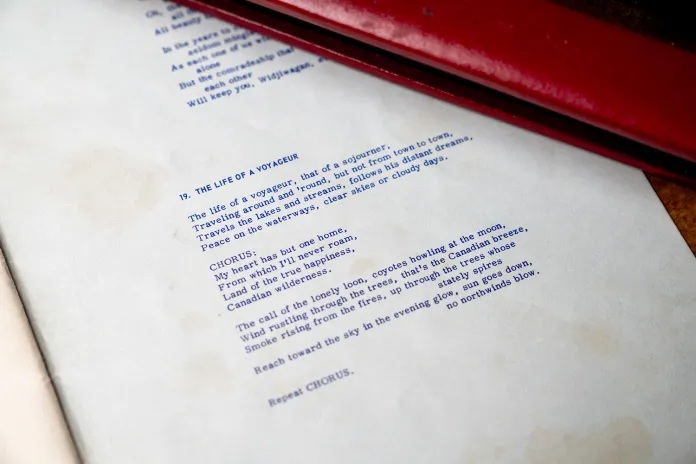Uncovering Widji's Time Capsule: Charting the Early Days of Voyageur
Our article about the Widjiwagan photo album commemorating the first 10 years of the Voyageur program was published in the October 2025 issue of “Letters From Camp” magazine. Space was limited and we couldn’t include as many photos as we wanted. Read on for photos from each section.
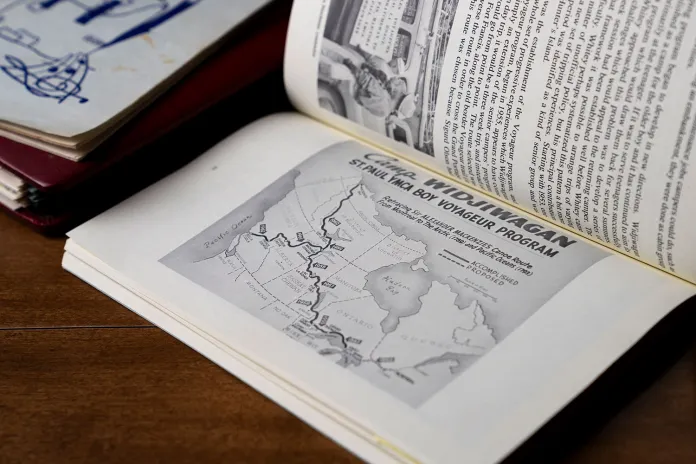
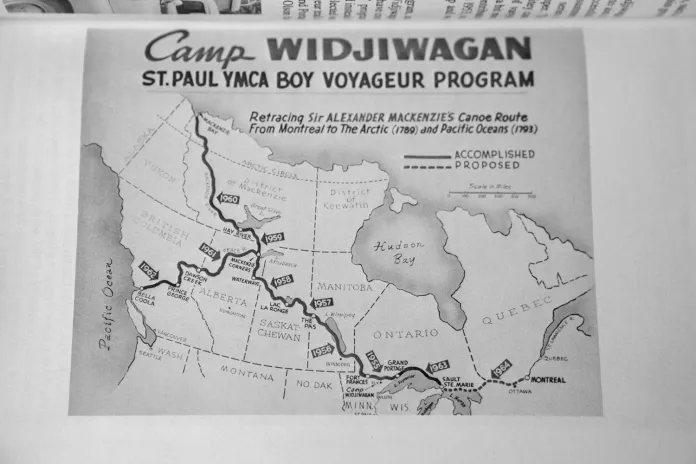
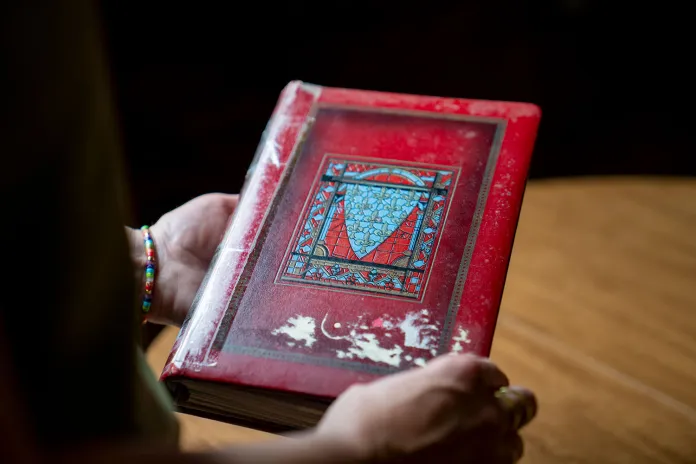
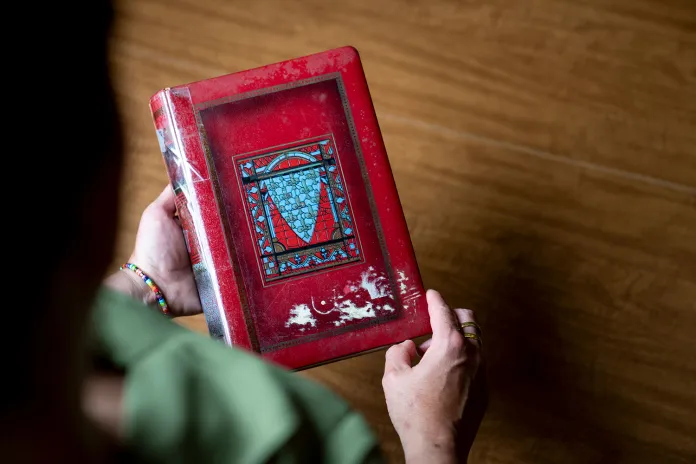
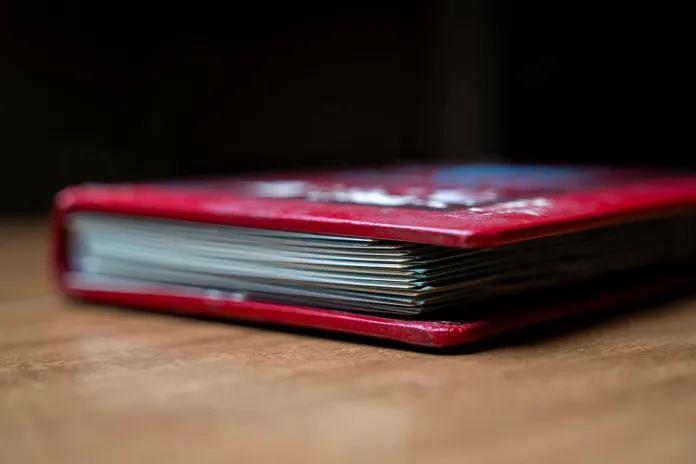
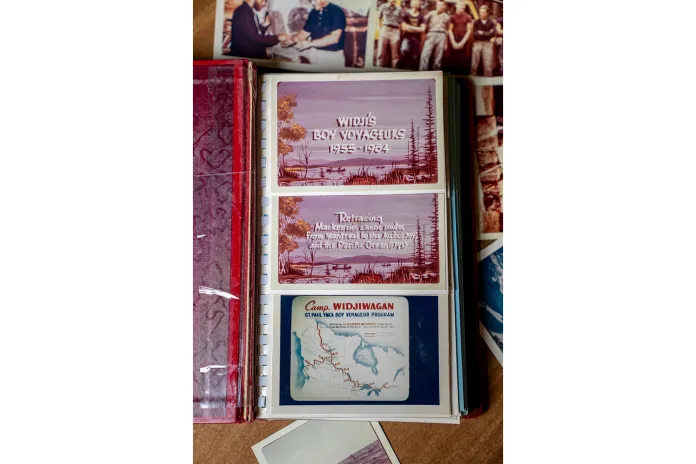
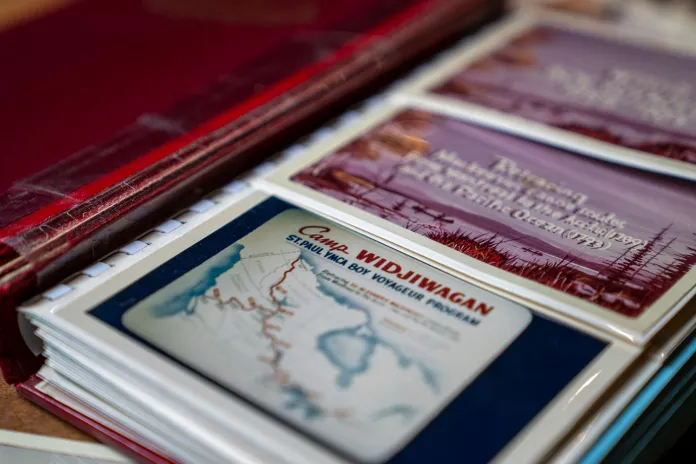
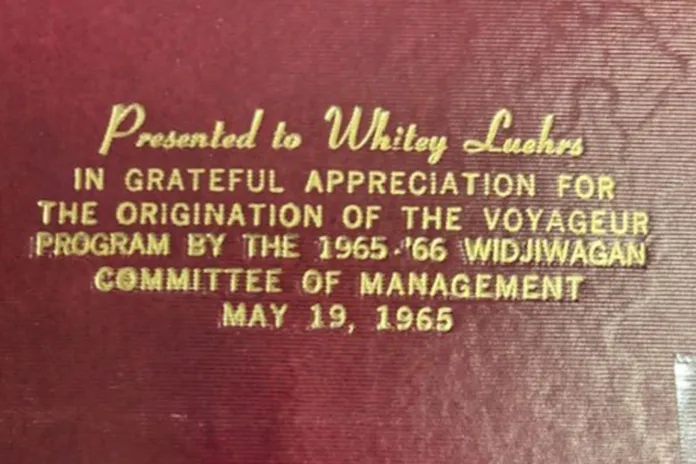
Segment 1 of Old Voyageur Highway — 1964 (the final trip)
“The first segment of the old Voyageur Highway was the last trip for Widji.”
“The Voyageur stories were told around an evening campfire and the burning of our maps symbolized a feeling of pride and accomplishment. A feeling of admiration and fulfillment were involved as we presented this jar of St. Lawrence River water to Whitey Luehrs, the originator of the Voyageur program. And thus ended the final chapter of the Voyageur Program I.”
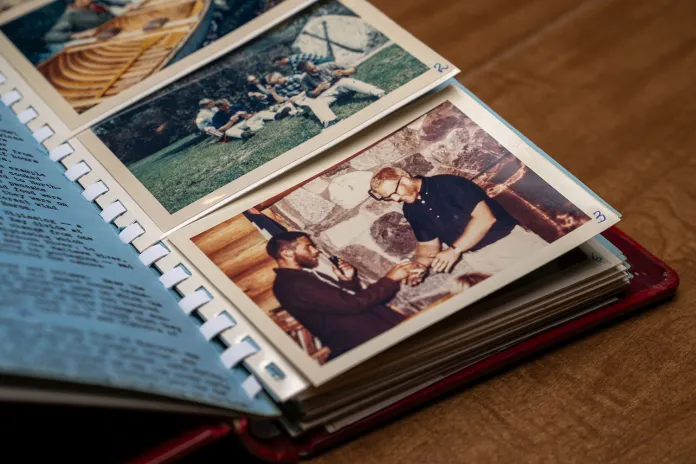
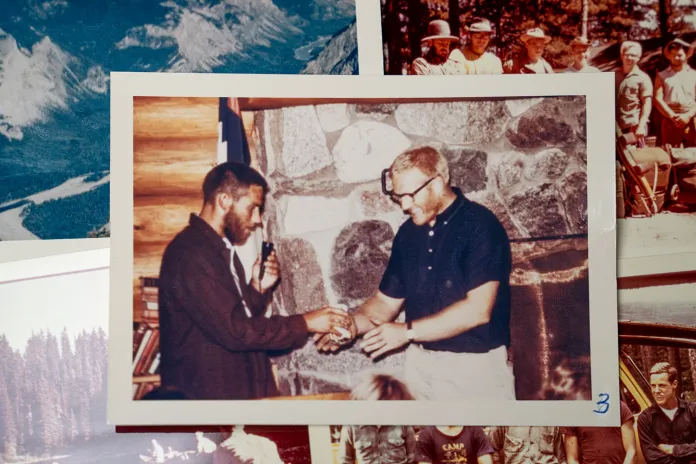
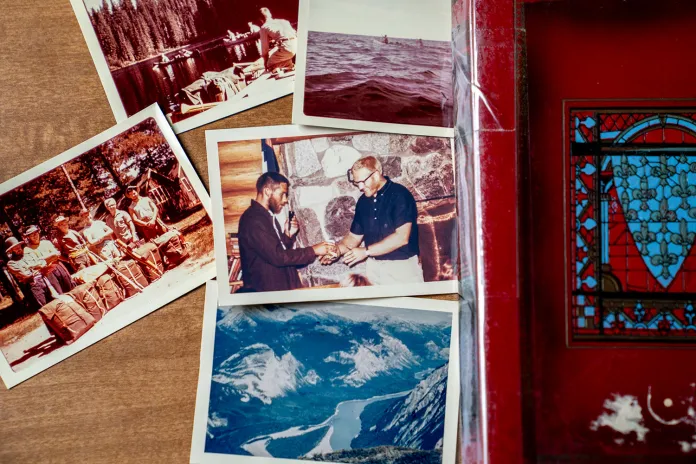
Segment 2 of Old Voyageur Highway — 1963 (the ninth trip)
“Lake Superior presented four basic challenges to us as we planned and journeyed on our trip. Wind, waves, sun and fog. This great lake became part of us as we journeyed along it.”
“This marked the end of another great trip full of wonderful experiences, big challenges, and most all, five topnotch Widji campers and a thankful leader.”
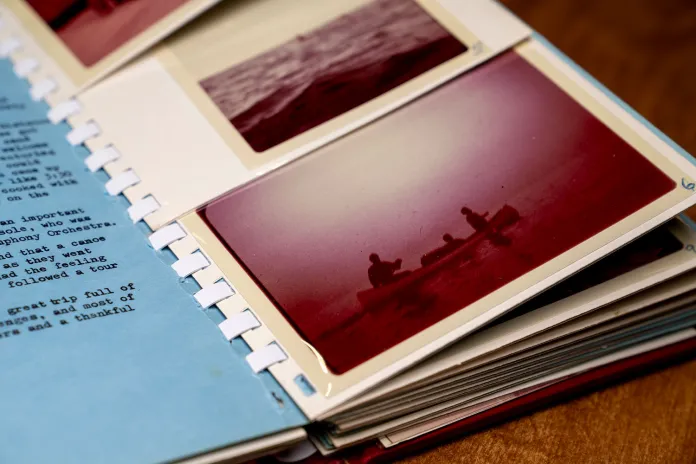
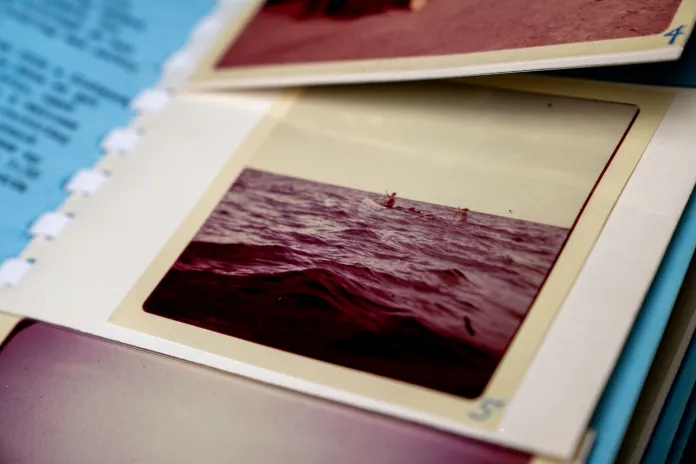
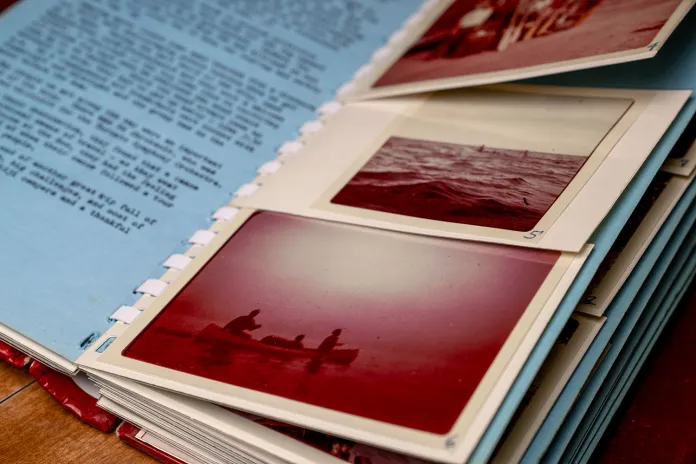
Segment 3 of Old Voyageur Highway — 1955 (the first trip)
“Widji’s first Voyageur trip encompassed the third segment of the old Voyageur Highway.”
“A hand-operated marine railroad was welcome help in portaging between Little Gunflint and Little North Lakes. It was at this point that the Voyageurs held a sort of crossing-the-equator ceremony as they inducted novices, passing this pint for the first time to become “hommes du nord.” Thus far, they had been derisively known as ‘mangeurs du lard’ or Pork Eaters.”
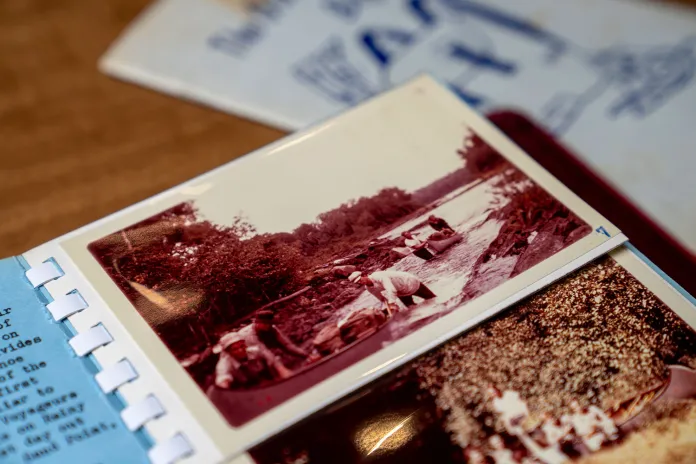
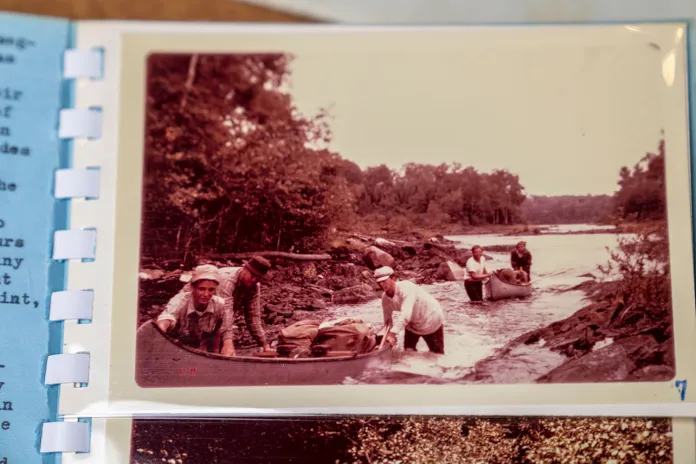
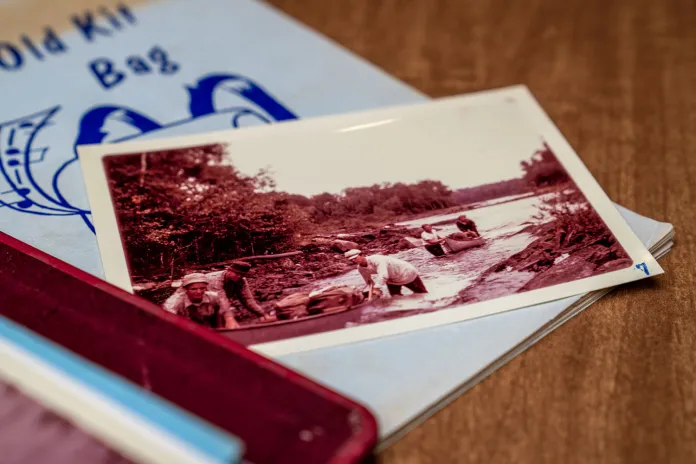
Segment 4 of Old Voyageur Highway — 1956 (the second trip)
“The first four days out were through such encouraging lakes as Lake Hope and to more typical lakes such as Lake Despair before reaching Kakagi Lake; it’s crystalline clear waters are a symbol of the truly wild beautiful wilderness encountered.”
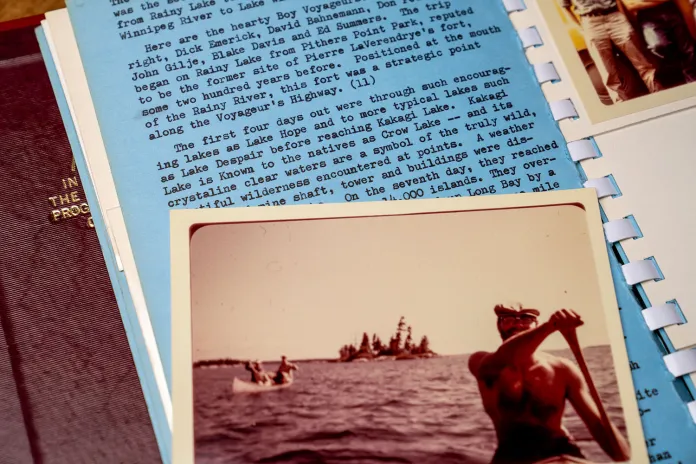
Segment 5 of the Old Voyageur Highway — 1957 (the third trip)
“From the Sturgeon-Weir River, the route led to Amisk Lake, where a bit of adventure lay ahead. The sunset was lovely, but the next day was so windy that one could look up at the crests of the oncoming waves.... Chuck, Jim and Terry hold the results of a half-hour’s fishing”
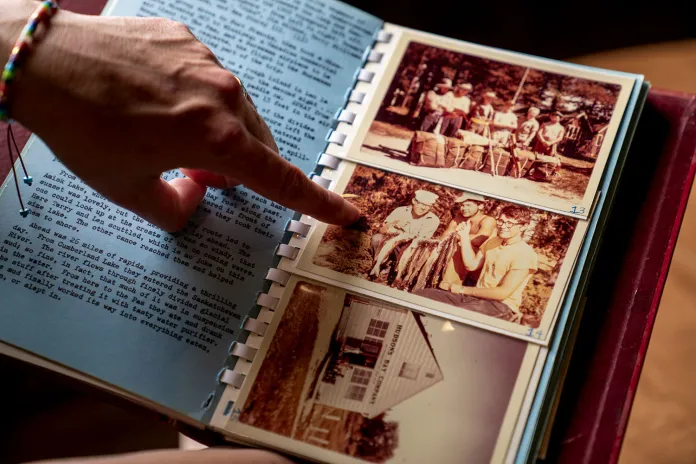
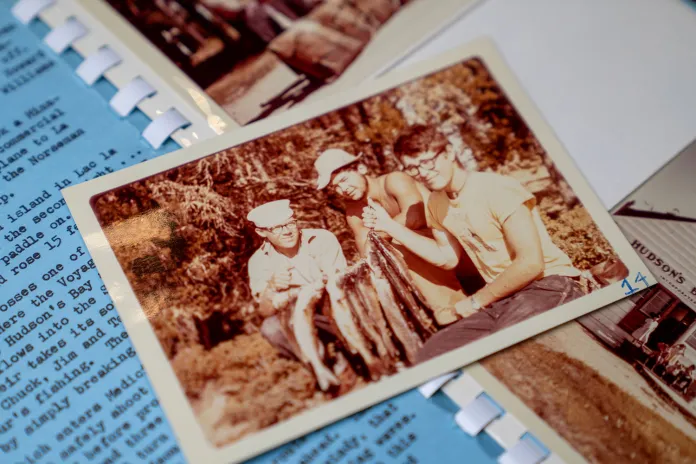
Segment 6 of the Old Voyager Highway — 1958 (the fourth trip)
“Thirty miles and five days against the strong shallow river led to the Methye Portage, the longest and most historic on the Voyageur highway. We wanted to find out if the historic journals were accurate. They were ... the next several days were spent charting and carefully shooting some of the most famous and thrilling rapids of the Voyageur route. Only the most treacherous could be portaged or lined. The rest had to be expertly shot.”
“We entered the woods as boys and emerged as men.”
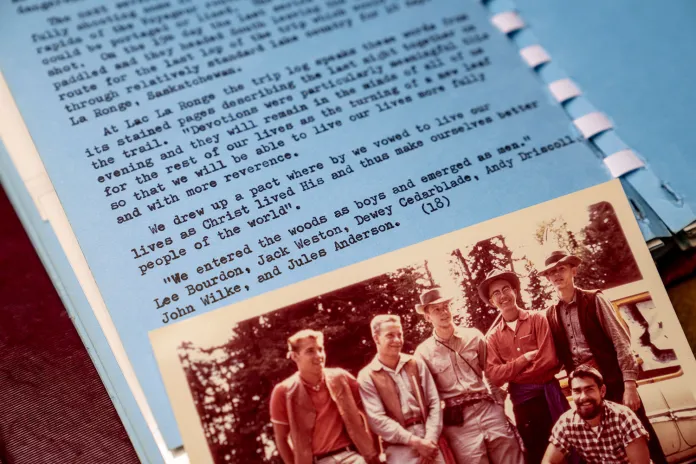
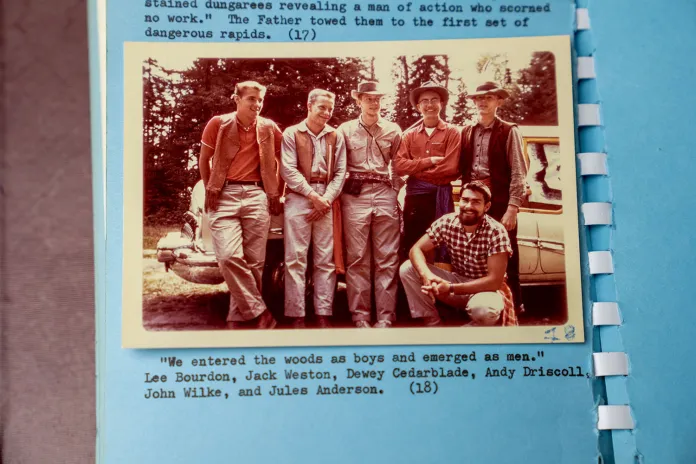
Final section of the Old Voyageur Highway (and first stretch of Alexander’s exploration of Great Slave Lake) — 1959
“The 1950 Voyageur trip retraced the final stretch of the old Voyageur Highway from Waterways to Lake Athabasca, then began Sir Alexander MacKenzie’s route toward Great Slave Lake. On August 10th, they reached Lake Athabasca, camping at the same northwestern point where MacKenzie camped before and after his wrong way trip to the Arctic.”
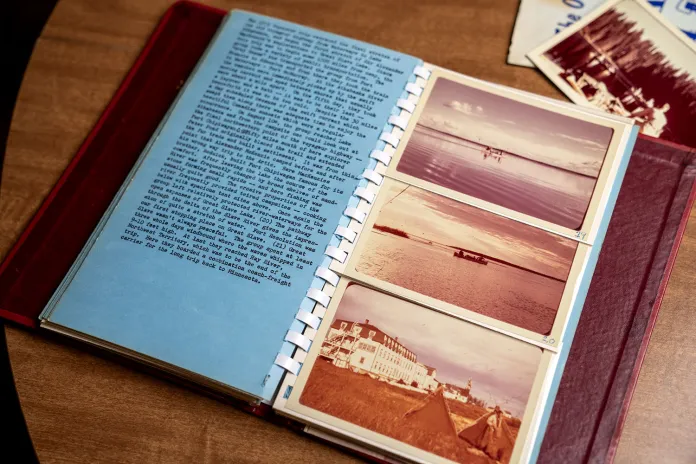
Retracing Mackenzie’s route on Great Slave Lake to the Arctic — 1960
“The objective of the 1960 trip was to retrace MacKenzie’s route on Great Slave Lake, paddling 1,100 miles in 36 days to the Arctic Ocean.”
“There was one objective now and that was to reach the polar sea. Fighting strong winds and paddling late at night in order to take advantage of the calmer weather, they paddled 200 miles in four days, switching paddlers every two hours and at noon time, building large fires on the rocks to keep warm. Weathering some light snow and spending the night in a swamp waiting out 65-miles-an-hour wind, they finally arrived at Alklonik, an eskimo settlement that is also administrative headquarters for the Canadian government in this part of the Northwest Territories. The Royal Canadian Navy gave the group a fine welcome and helped us a great deal. To get to the ocean, the voyageurs paddled all night and into the sunrise on the 26th day of August. Sunshine and good weather finally announced the Artic Ocean on our 32nd day. This was indeed time for thanks.”
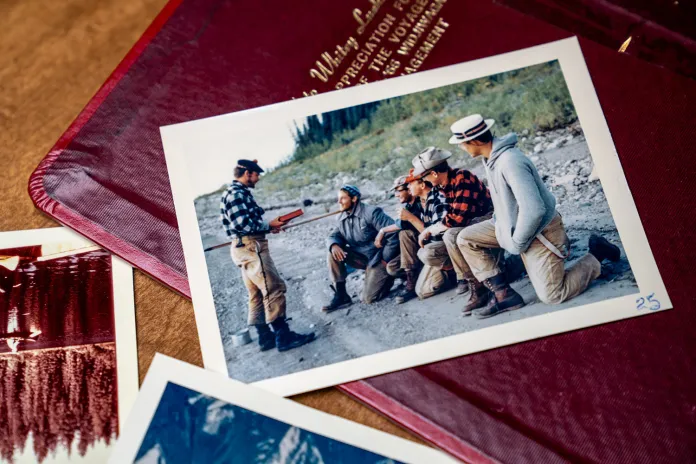
850 miles covered down the Crooked, Pack, Parsnip, and Peace Rivers — 1961
“The Boy Voyageurs arrival was expected and the reception was strictly of the red carpet variety. They camped in the postmasters’ backyard and a whirlwind of activities began, including an airplane ride, a tour of the town and its sights, a look at the government experimental farm and the local Indians even put on a special dance. At the end of two days, the whole town gathered together in the evening, and one of the motivating factors behind this grand reception was revealed in that recently one of the local residents had been in a St. Paul hospital and his life had been saved by blood donated by the people of St. Paul.”
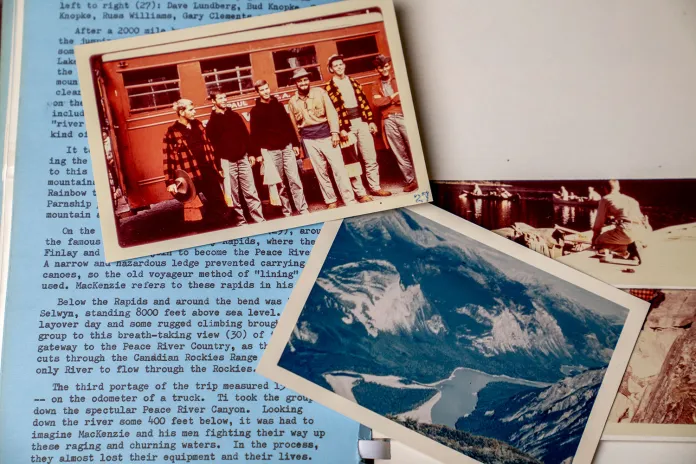
Punchaw Lake to the Pacific Ocean — 1962
“As they began to climb the MacKenzie pass, they stopped to look back into the Rainbow Valley and realized why MacKenzie said that this was the most beautiful country that he had seen in all his travels across the continent.”
“And finally, after an absence of 43 days, they returned to Widji and were met by parents and friends and Whitey Luehrs. Windy gave him a peanut butter jar full of sea water. A peanut butter jar that had traveled with them to the Pacific Ocean, carrying part of our food and on the way back, carrying part of our lives. It’s meaning to the Voyageurs and to Whitey was the meaning of a challenge met, a promise fulfilled, and a trip completed.”
